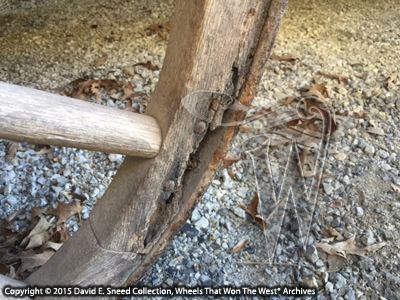Undoubtedly, the most common questionswe receive are focused on early vehicle values. Before diving off into this surprisingly deep topic, let's take a look at a few points that can sometimes cause confusion. Too often, theseantiquities are generalized with one set of wheels assumed to always be on parwith any other. The fact is, everyperiod wagon is an individual, with a separate history and uniqueattributes. It takes a thoroughunderstanding of these early pieces to make comparisons. As a result, it’s not typically a good ideato assume a particular value for one set of wheels by looking solely at whatsomeone else is asking for another.
Unlike today’s automotive industry,there are no printed value guides for old wagons and, since there are seeminglyendless variables separating these pieces, the subject is full of opportunitiesto misinterpret value. Yet another point tobe made is that since no two wagons are ever exactly alike, it can sometimes beproblematic to take even realized prices at face value without examiningvarious qualities of the vehicle, itself. I’ve seen pieces with “perceived” attributes sell at auction forsignificant prices, only for the new owner to discover that troubling points had been overlooked and too much had been paid. Cue the well-worn phrase, “Caveat Emptor.”
With those thoughts in mind, we’ll takea look at seven areas that should always be assessed prior to assigning valueto a specific piece. Even so, none ofthe points below can be looked upon as stand-alone considerations. The collective whole of what I’ll point out inthis post (as well as other considerations) must be evaluated together. With that as a background, let’s take a lookat a few crucial areas that can impact period wagon values.
Condition – This pointcovers a lot of territory with countless features to be examined. What is missing, broke, weakened, replaced,or rotted on the wagon? What is thelevel of wear to each and every part? Thisportion of the evaluation process can be extensive and costly if one doesn’t knowwhere and what to look for.
 |
| Degradation or rot in old wheel felloes is a common sight these days. Nonetheless, its presence can lessen a vehicle’s resale value. |
Brand – Similar tomotorized vehicles today, the authenticated brand name of a wagon box and gear caneasily impact the desirability and purchase price. Similarly, it’s important to understand thatmany well-known wagon brands also created secondary brands. Knowing this history can help a collector addimportant pieces to a collection without the cost sometimes attached to theprimary brand.
Age – Most antique,wood-wheeled wagons are either near or over one hundred years in age. While it’s a remarkable thought to ponder,simply because a wagon possesses a well-seasoned age does not necessarily meanit has great value. Similarly, it’s possiblefor some 20th century wagons to carry more value than a 19th centurycounterpart - or maybe not. As I’ve mentionedelsewhere, the collective whole of these points, ultimately, helps define anaccurate value.
Provenance – Thedocumented personal history of a particular piece can also impact historic,sentimental, intrinsic, and resale values. It’s generally good to pursue as much verifiable information as possibleabout a vehicle as it can add to the interest of a set of wheels.
Originality levels – Like so manyother elements, this is an area that requires significant experience to confirmthe authenticity of a piece. Replacedand mismatched features along with modern repairs, repainting, or otheraftermarket wood treatments can impact values.
Vehicle features – Originalaccessories and intriguing construction elements can sway values bothpositively and negatively. Knowing whata particular brand was doing at a particular time can be extremely helpful inassessing the significance of individual features.
Vehicle type – Wagon makerscreated numerous types of wagons with even more varieties of construction andfeatures. Not all vehicle types areconsidered equally collectible.
Ultimately, this overview is not meantto be all-encompassing, overly simplistic, or even confusing. Rather, it’s clear that the need for resalevalue information is important to the preservation and understanding of everysurviving vehicle. It’s our hope thatthe highlights in this week’s blog can help others put these wood-wheeledwarriors into better perspective; encouraging more attention be given toindividual pieces with less reliance on vague, non-descript, and non-supportable notions.
Please Note: As with each of our blog writings, all imagery and text is copyrighted with All Rights Reserved. The material may not be broadcast, published, rewritten, or redistributed without prior written permission from David E. Sneed, Wheels That Won The West® Archives.
Please Note: As with each of our blog writings, all imagery and text is copyrighted with All Rights Reserved. The material may not be broadcast, published, rewritten, or redistributed without prior written permission from David E. Sneed, Wheels That Won The West® Archives.
